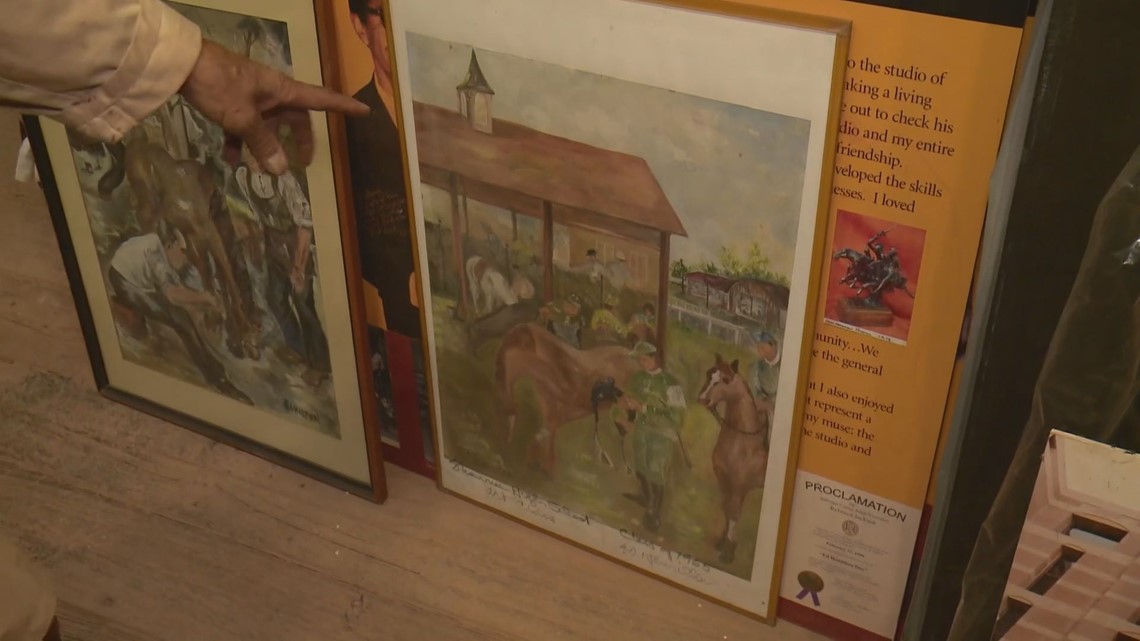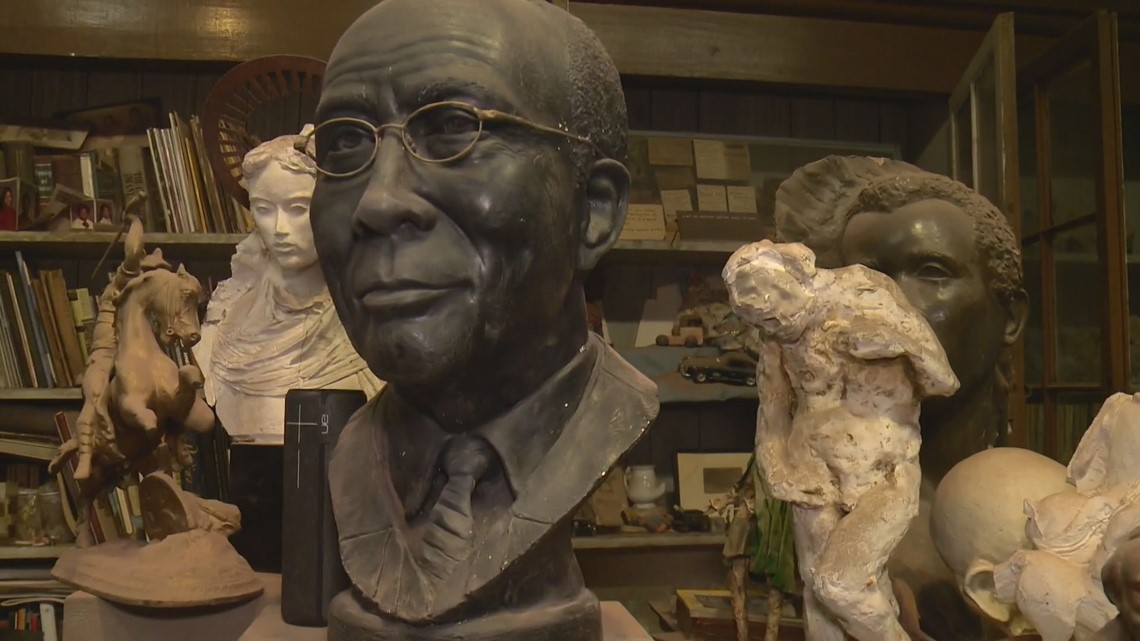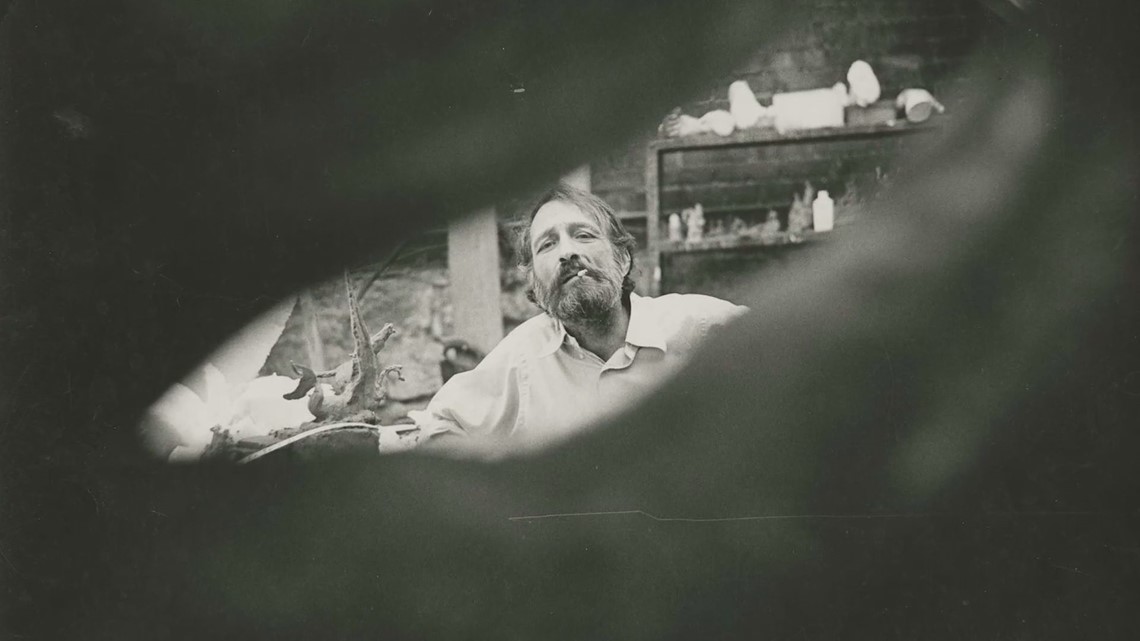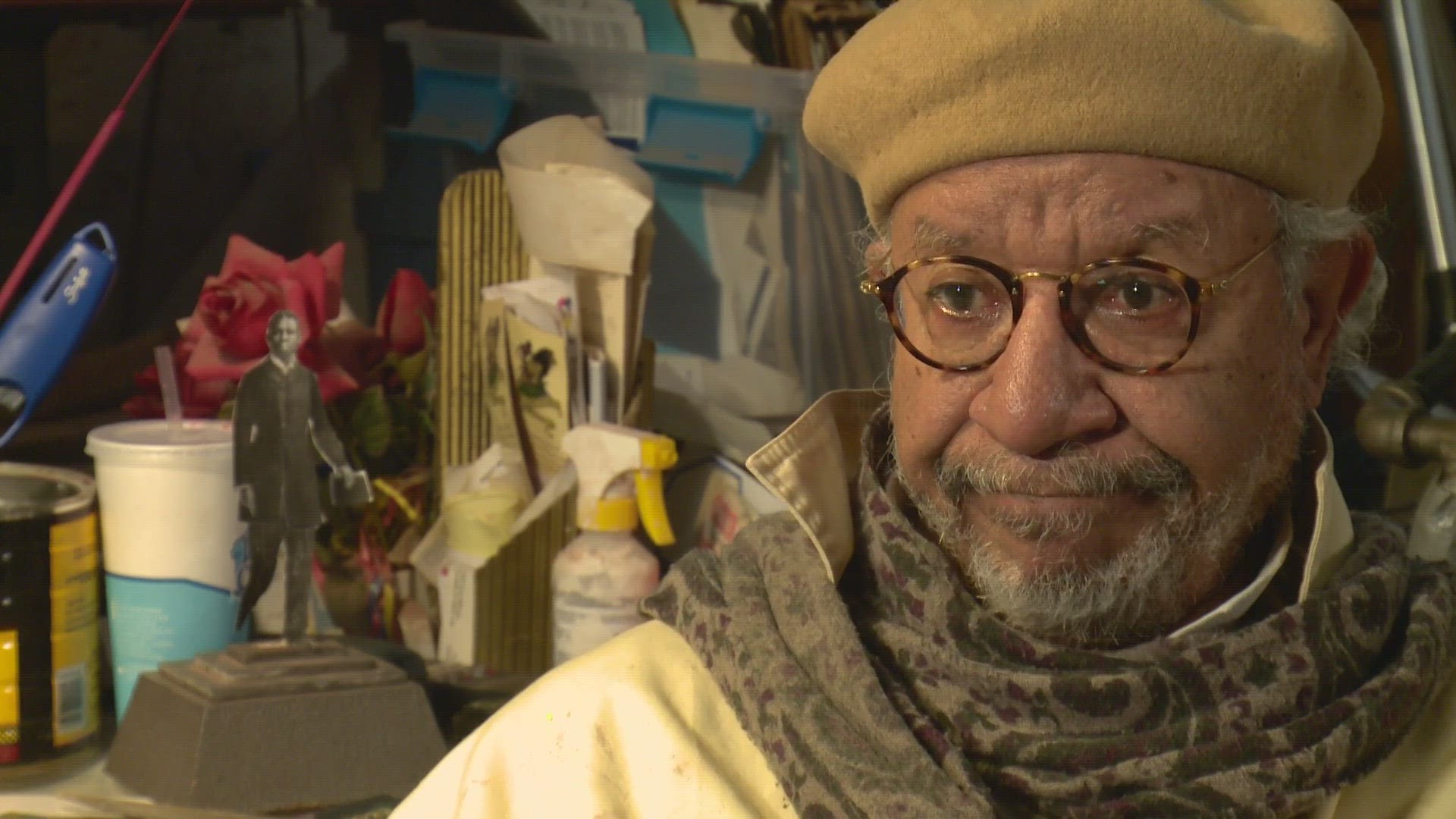LOUISVILLE, Ky. — Louisville-based sculptor Ed Hamilton has used remarkable talents to make the city, and others, stand out. He is celebrating more than a half-century in business, creating statues that last more than a lifetime.
And on Valentine’s Day, he’s turning 77 years old.
Hamilton's studio is always full of music and is a treasure itself.
He’s known around the Metro for sculpting the Abraham Lincoln sculpture down at Waterfront Park, and York of the Lewis and Clark expedition.
Hamilton has also been known to occasionally pick up a paint brush; he’s also painted the old Churchill Downs paddock before the track remodeled the area.


To keep him in the mood while creating Lincoln, he played the soundtrack of Ken Burns’ Civil War documentary.
“I go between the real and the abstract,” Hamilton said. “But now I go more for the real because my dear wife Bernadette said your real work will carry you.”
While his more recent commission is a sculpture of Humana co-founder David Jones, his studio is a trip through history. He has a bust Supreme Court Judge Bill McAnulty, the first Black justice on the Kentucky Supreme Court, and a painting he did for Booker T. Washington.
While born in Cincinnati, Hamilton grew up with his adopted family in Louisville. His father’s shop was on old Walnut Street near 7th Street. Walnut is now Muhammad Ali Boulevard.
He said he was always in and out of the shop skating, and called himself “mobile.”
“Always trying to escape so that my momma didn’t know where I was going, cause she was going to say, ‘where you going,’” Hamilton said.
“As I look back, I’m glad to be here, because I didn’t have to be here. I didn’t have to be here. I mean really, I could have gone down the tube.”
Hamilton grew up in what was then the heart of Louisville’s Black community. It was vibrant, bustling, full of music and restaurants, right in the middle of the city, where everyone took care of each other.


Along the way, his adoptive parents noticed his natural talents starting to emerge. He said he was able to live his calling because they kept him supplied “with all the necessary things, pencils, pens, to do what [mom] saw me doing.”
Hamilton attended the University of Louisville and Spalding during the racially segregated 70’s. And by then, he was creating his own art.
But Hamilton had a goal: meet sculptor Barney Bright. So, he hung out outside Bright’s studio, and waited.
And on that day, Bright walked outside to get the mail, saw Hamilton, and invited him inside the studio.


And the rest is history.
“I've had a great ride man, you know, hey, how many people walk into Barney Bright’s studio and become an apprentice, just like that, and with this color, you see it mattered not to him,” he said. “He just knew I had the talent and I could do what he wanted me to do.”
Along the way, Hamilton married his amazing wife Bernadette and had two children. He's met presidents, visited the white house, and he and Bernadette spent time with then-Prince Charles, during his visit to Louisville.
His view of Louisville has always been so clear-eyed, and while his legacy is literally in bronze, his heart is truly gold.


“It takes no effort to be kind,” he said. “It takes no effort to put a hand down. We're more alike than we think. And if we can talk and sit down and have a cup of coffee or whatever, you’ll find we got more in common than you think we have. We have to know each other. And to know each other makes a better world.”
He’s currently working on two new statues: the African American poet Paul Lawrence Dunbar for Dayton, Ohio, and the 1800’s U.S. Supreme Court Justice John Marshall Harlan for Centre College in Danville. Harlan was a white man and once a slave owner, but he transformed himself and started routinely supporting the Black community on civil rights decisions. He even called our Constitution “color-blind.”
Make it easy to keep up-to-date with more stories like this. Download the WHAS11 News app now. For Apple or Android users.
Have a news tip? Email assign@whas11.com, visit our Facebook page or Twitter feed.

